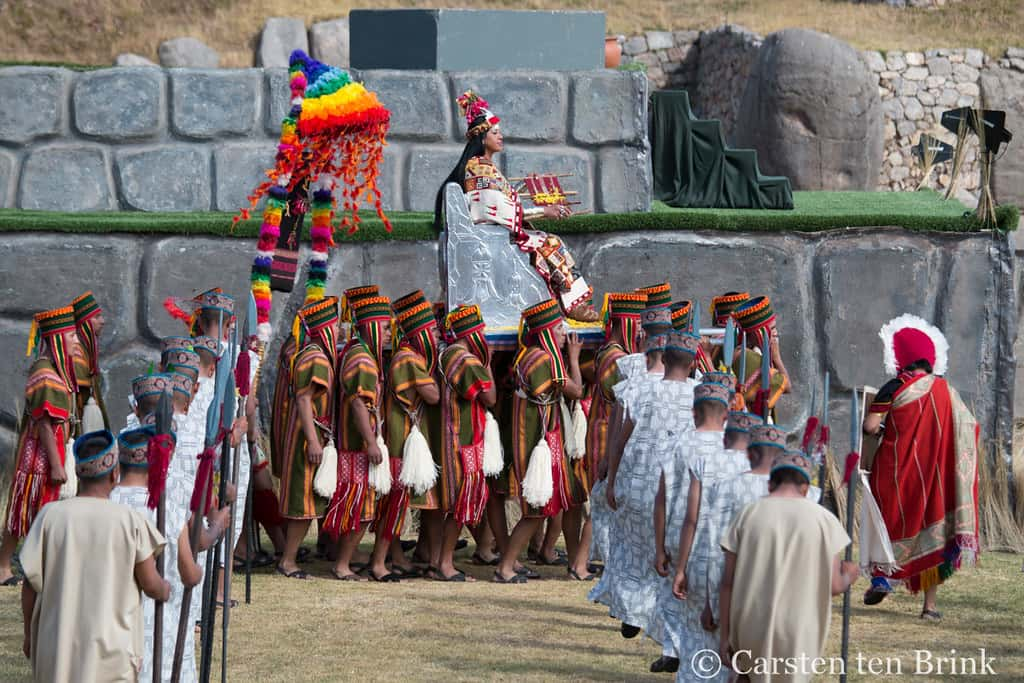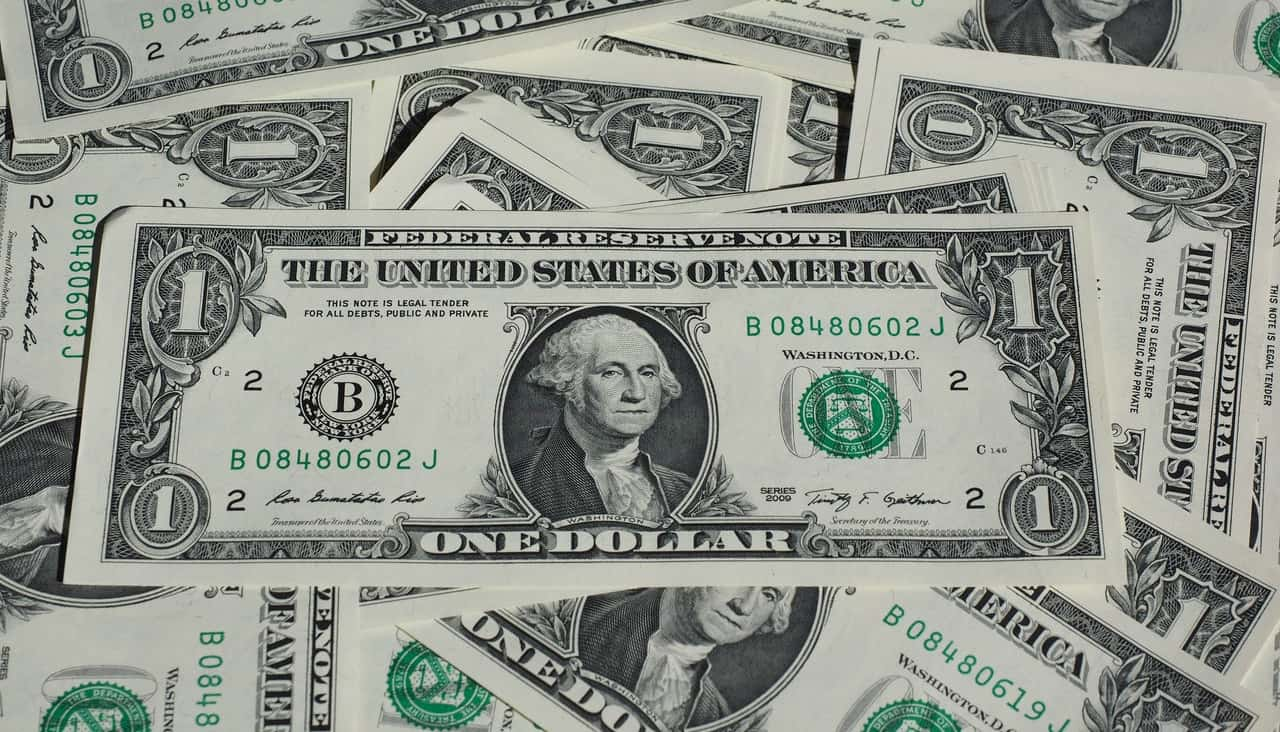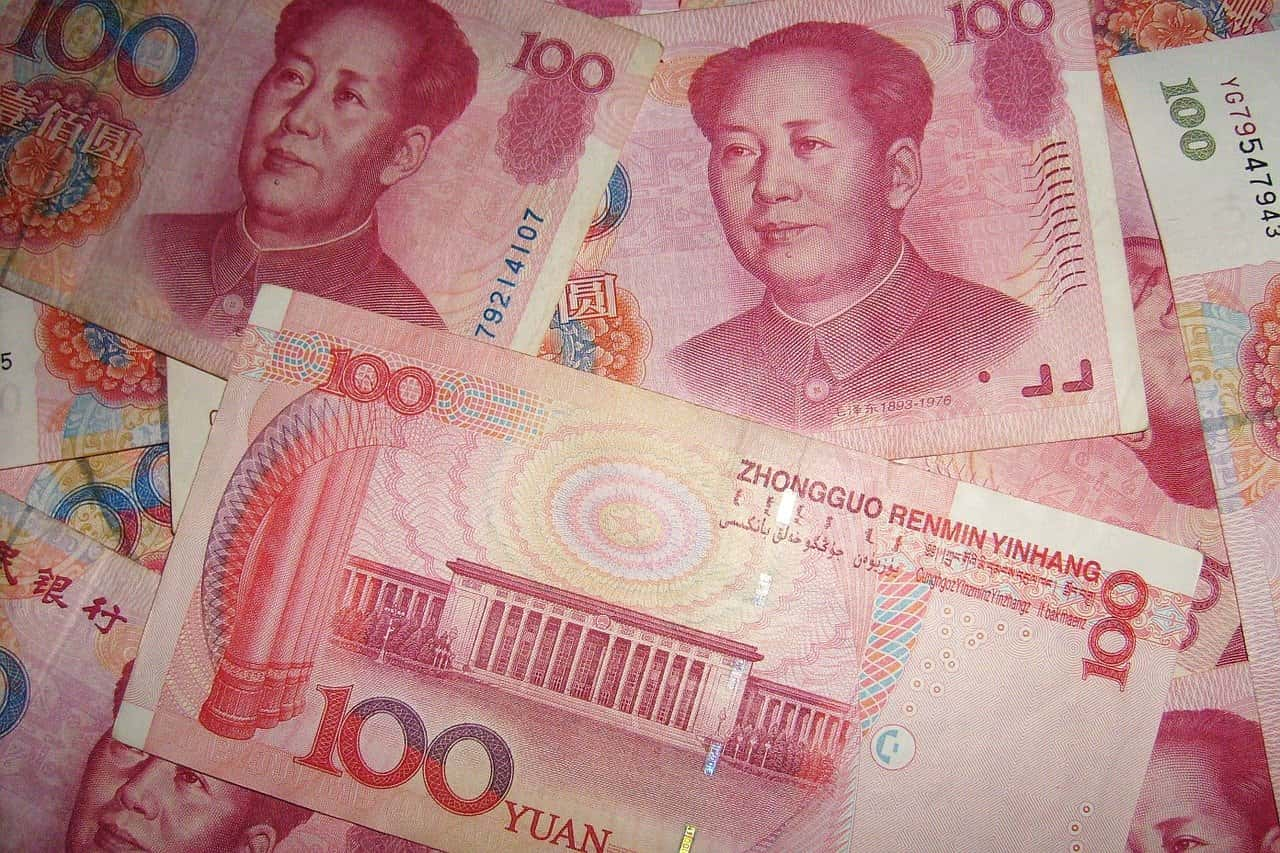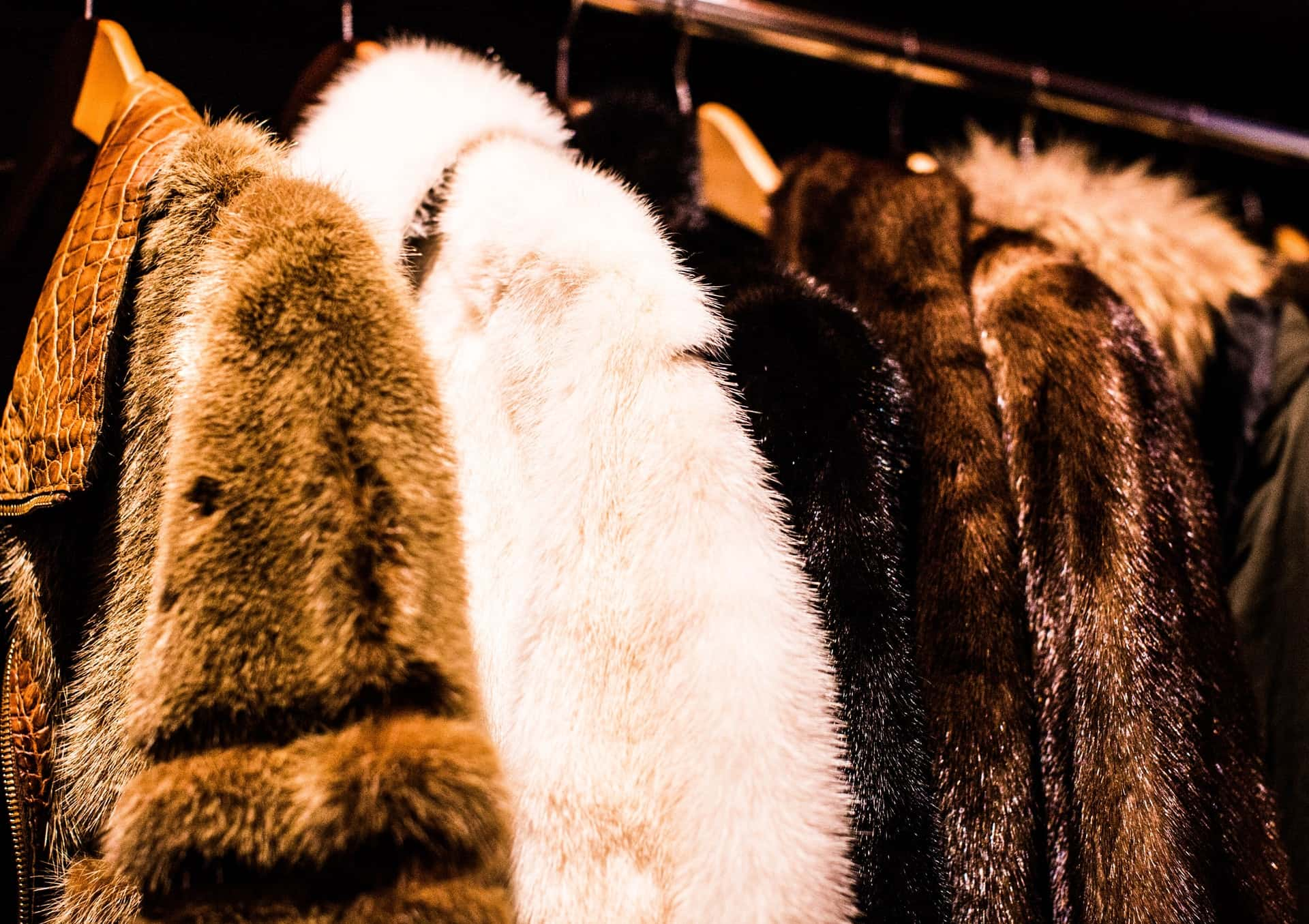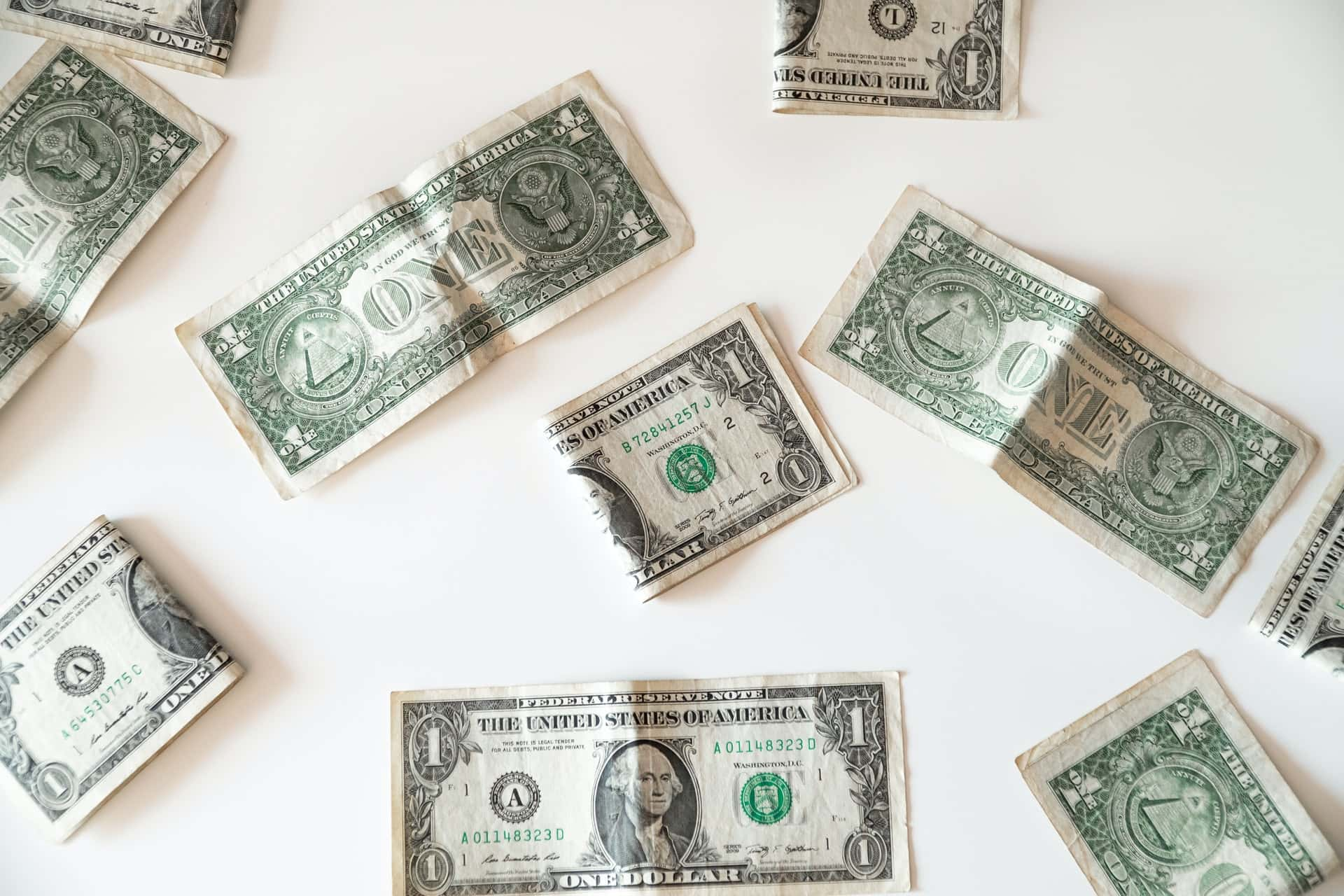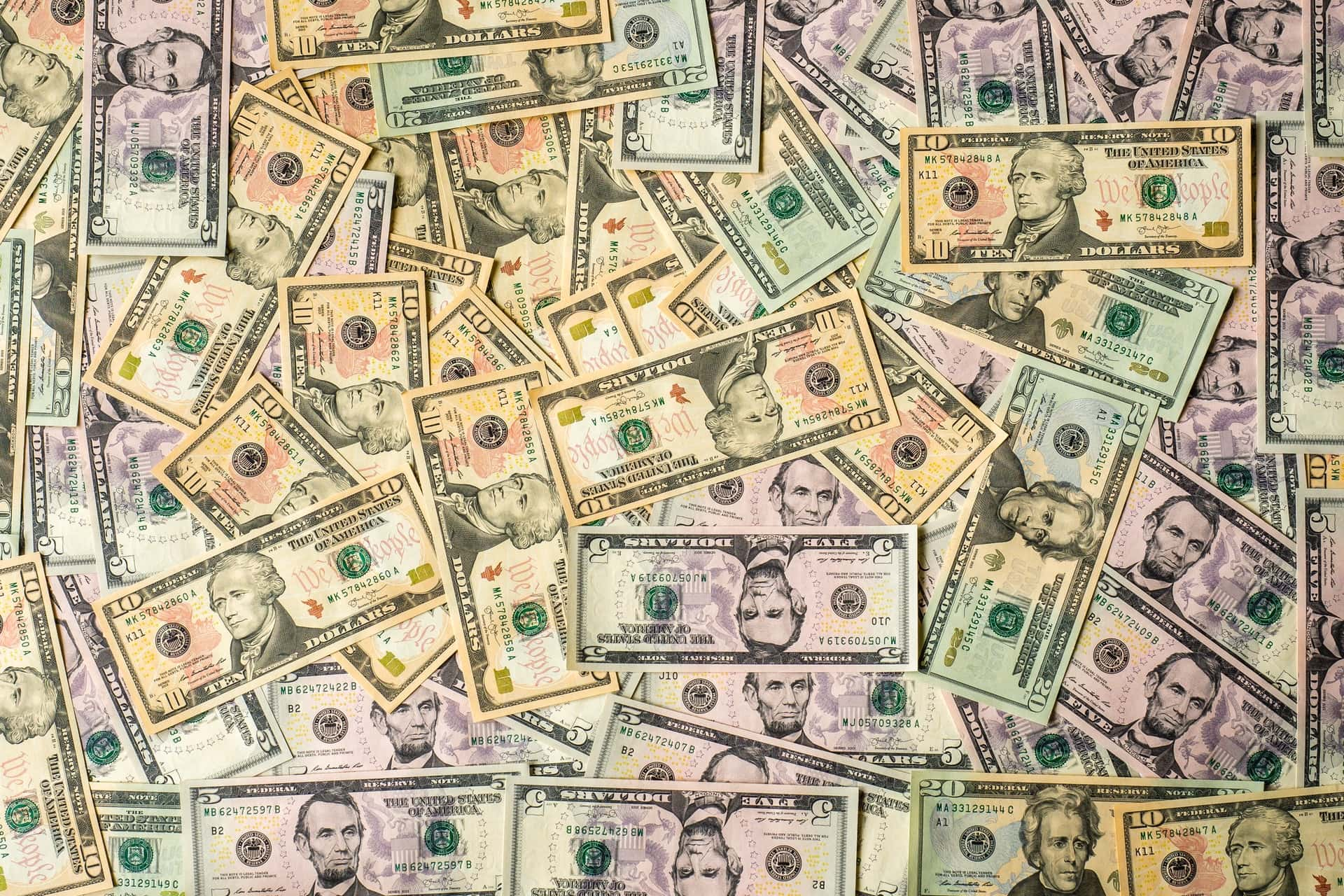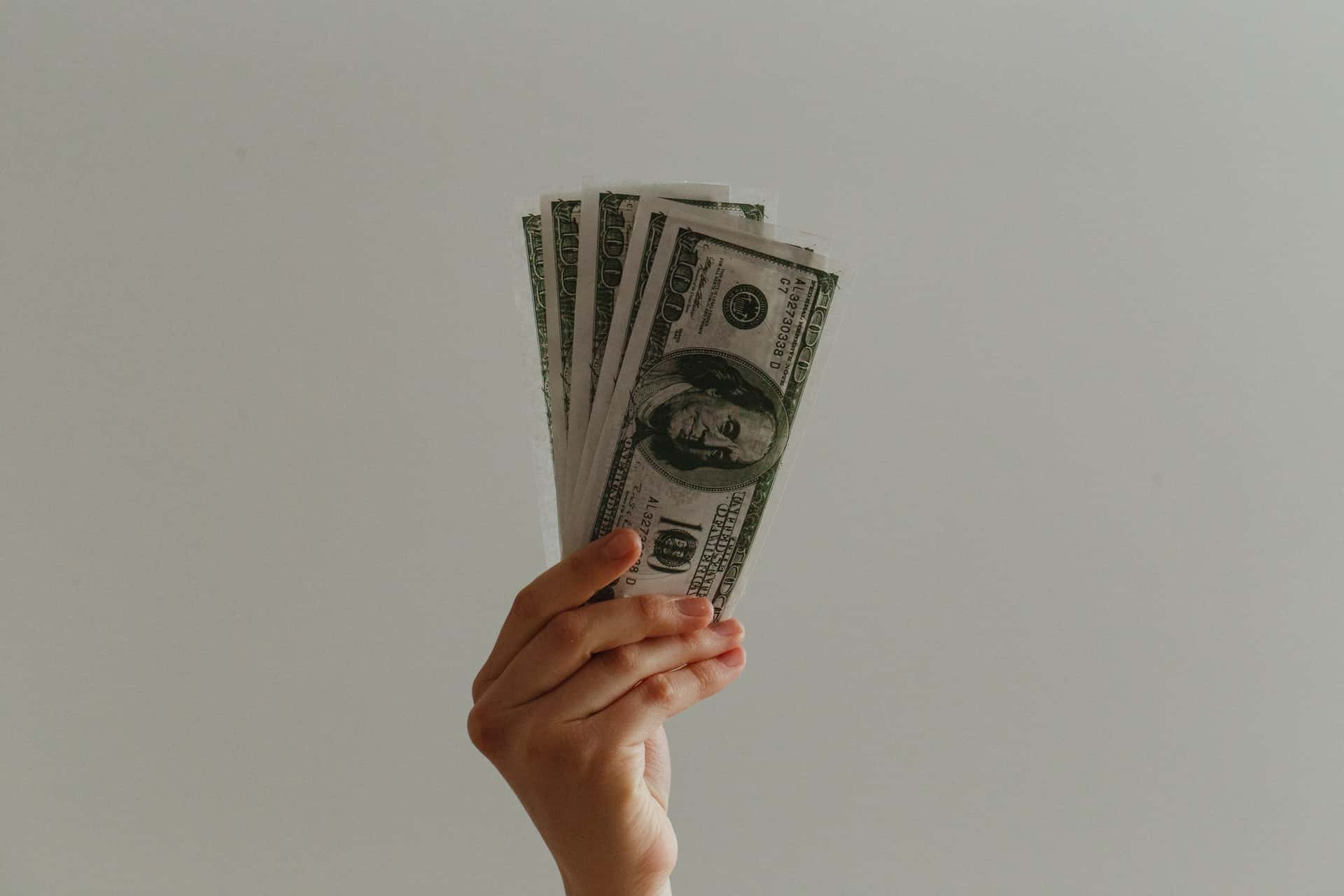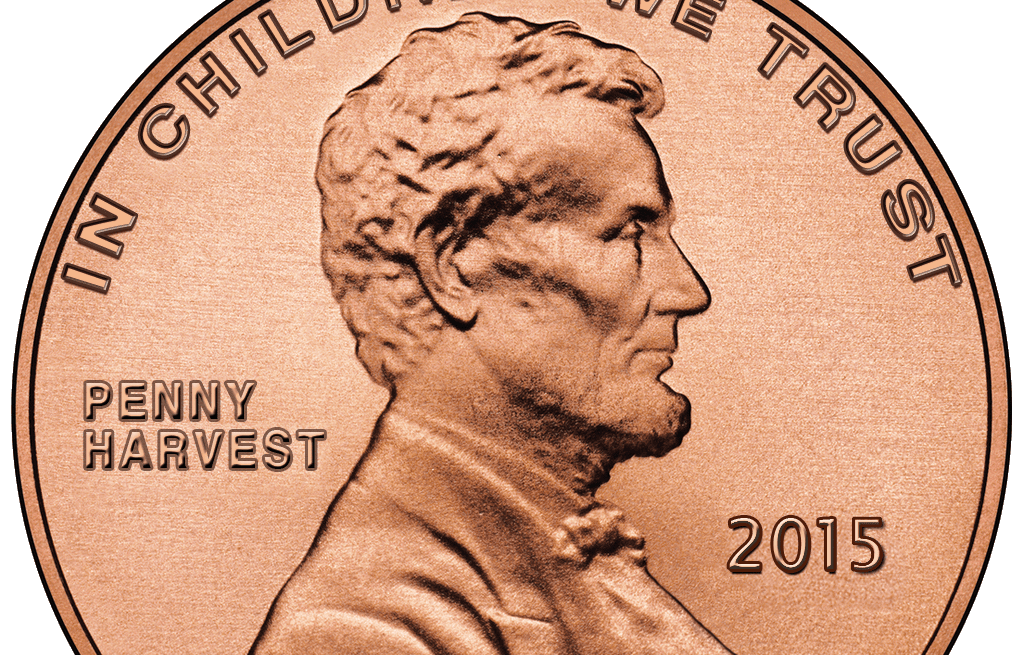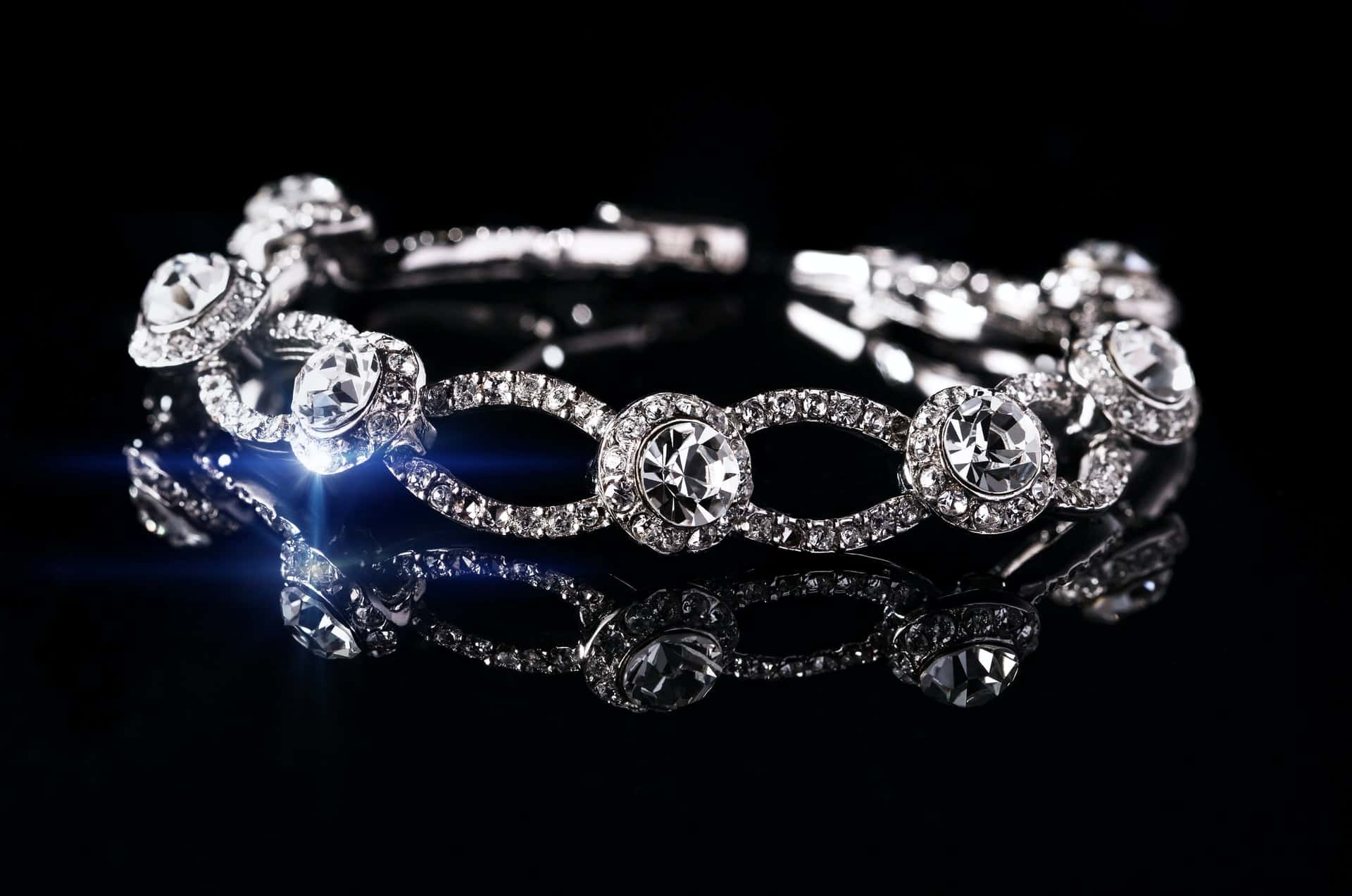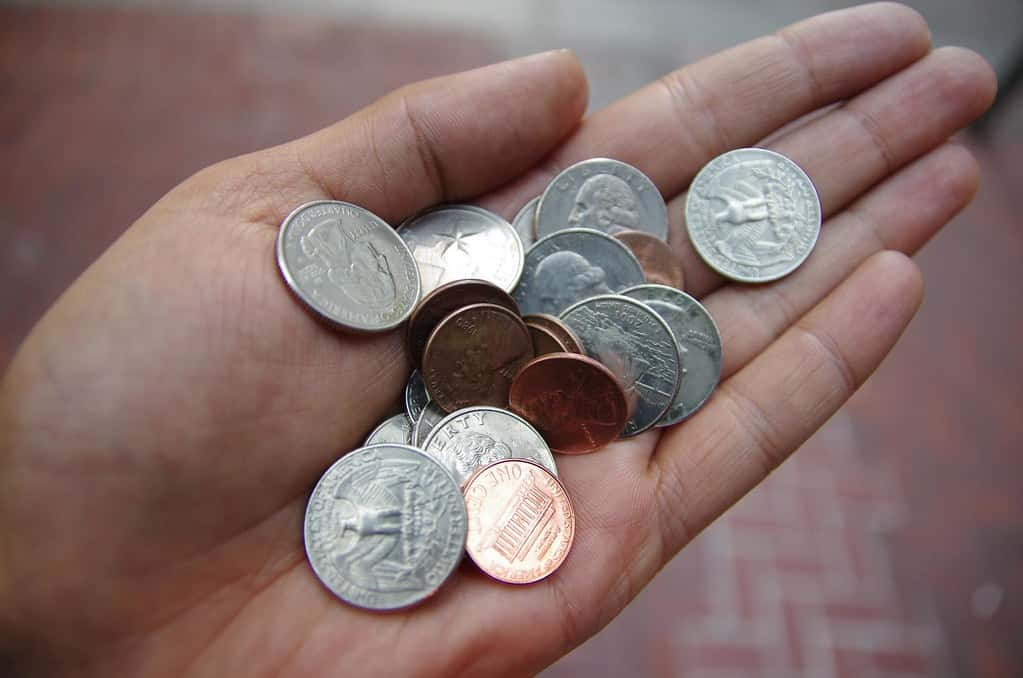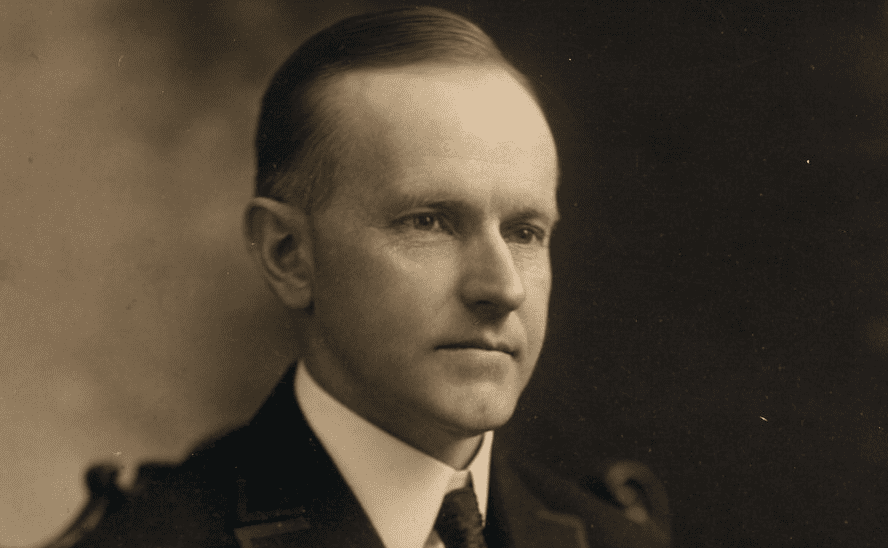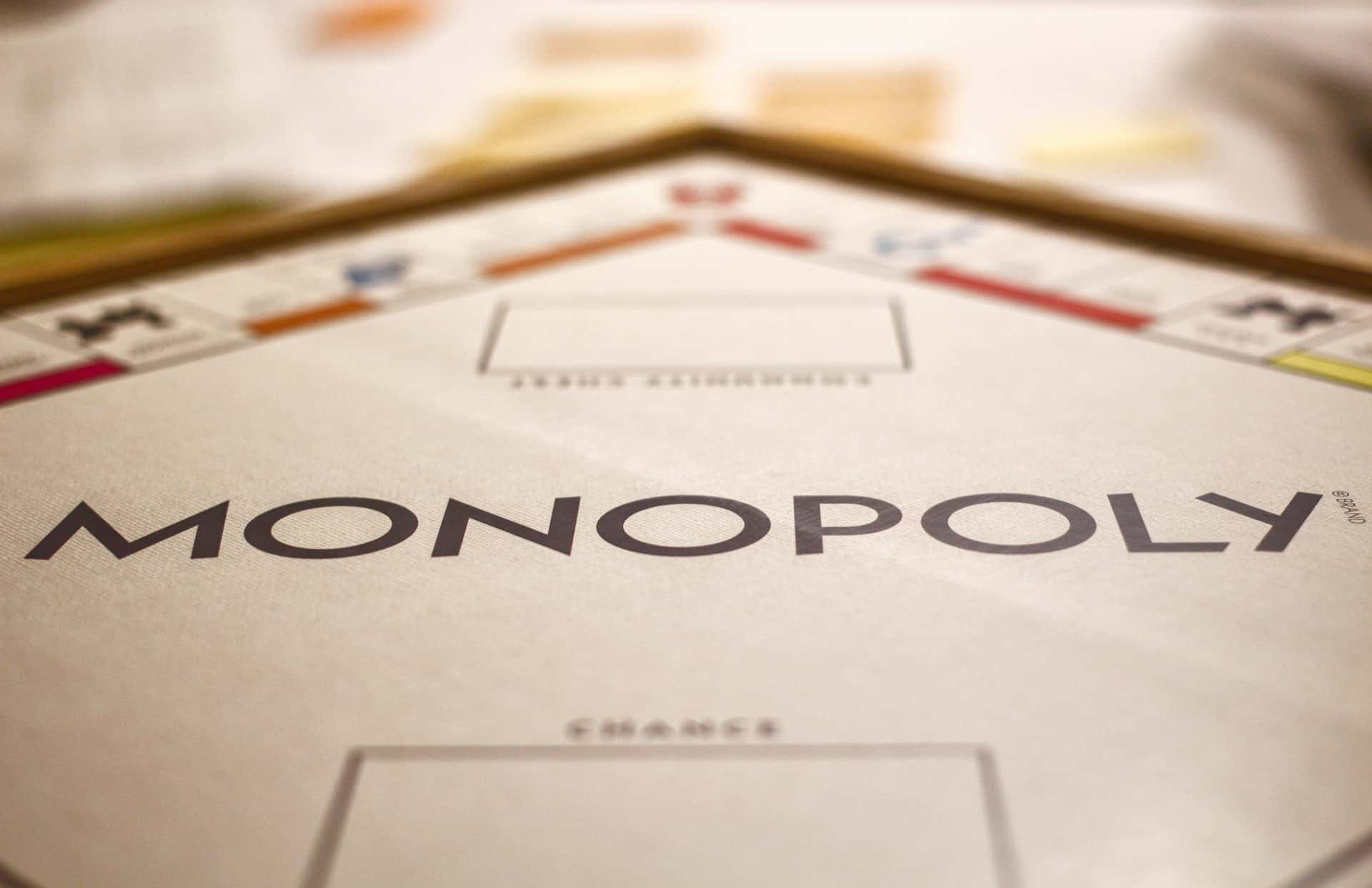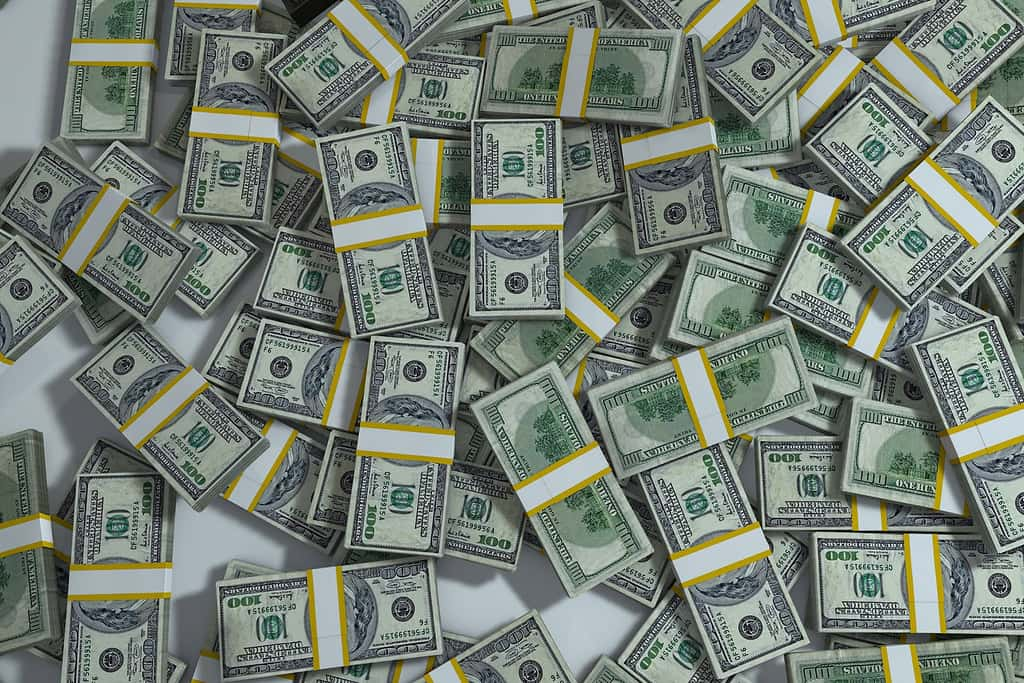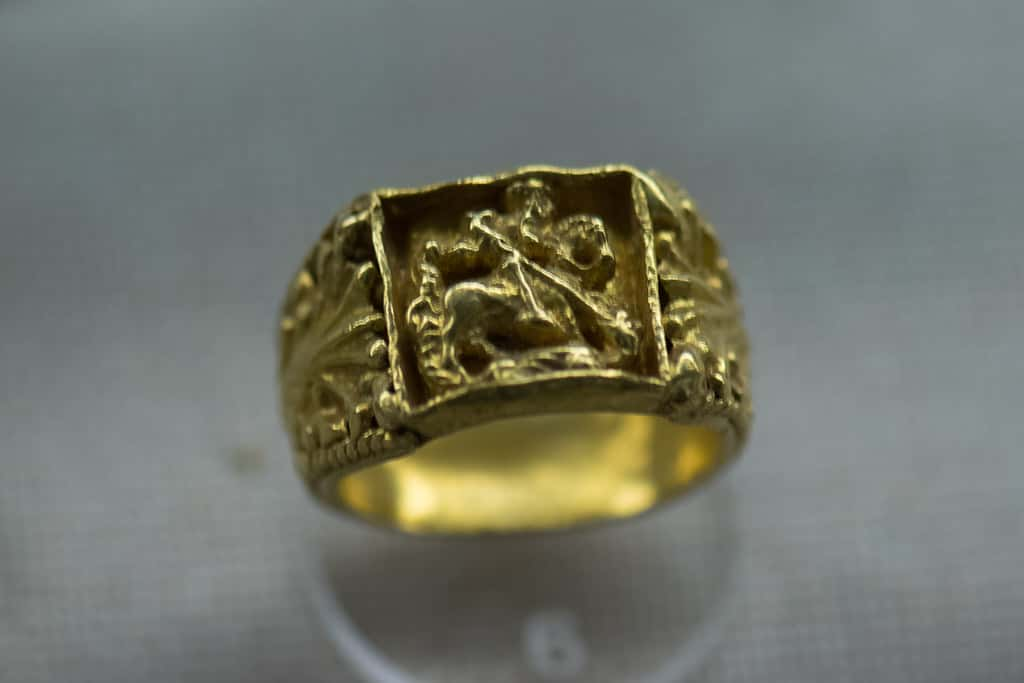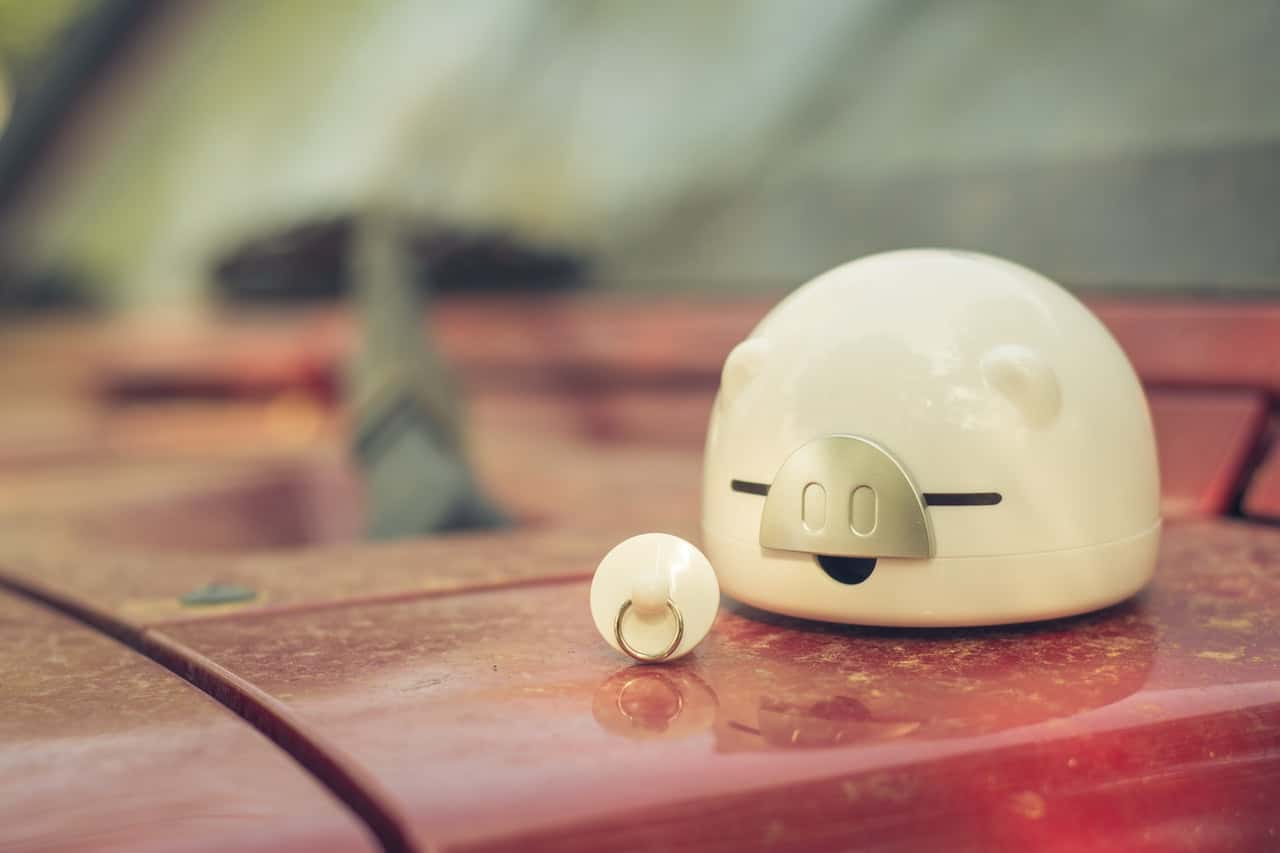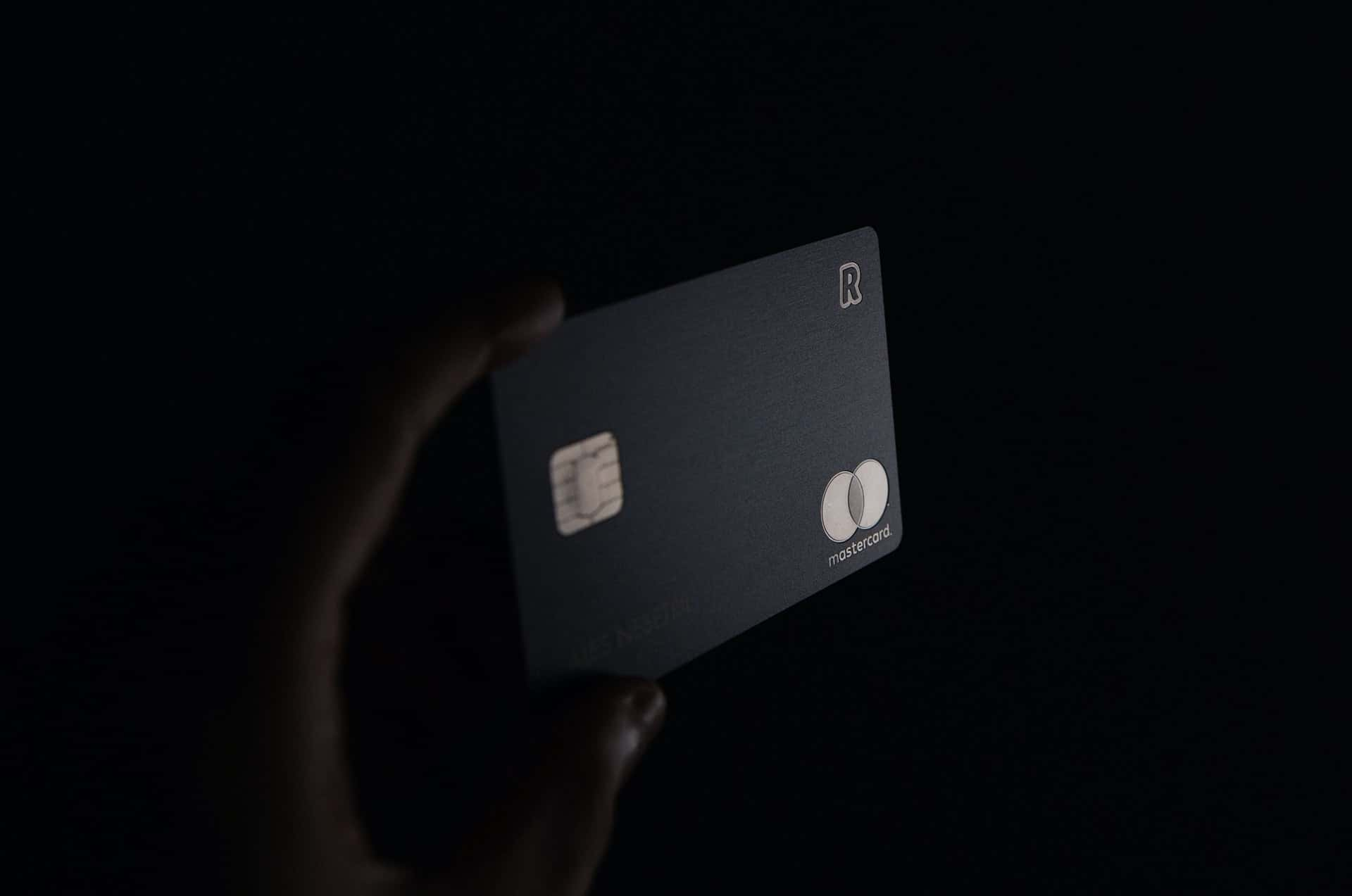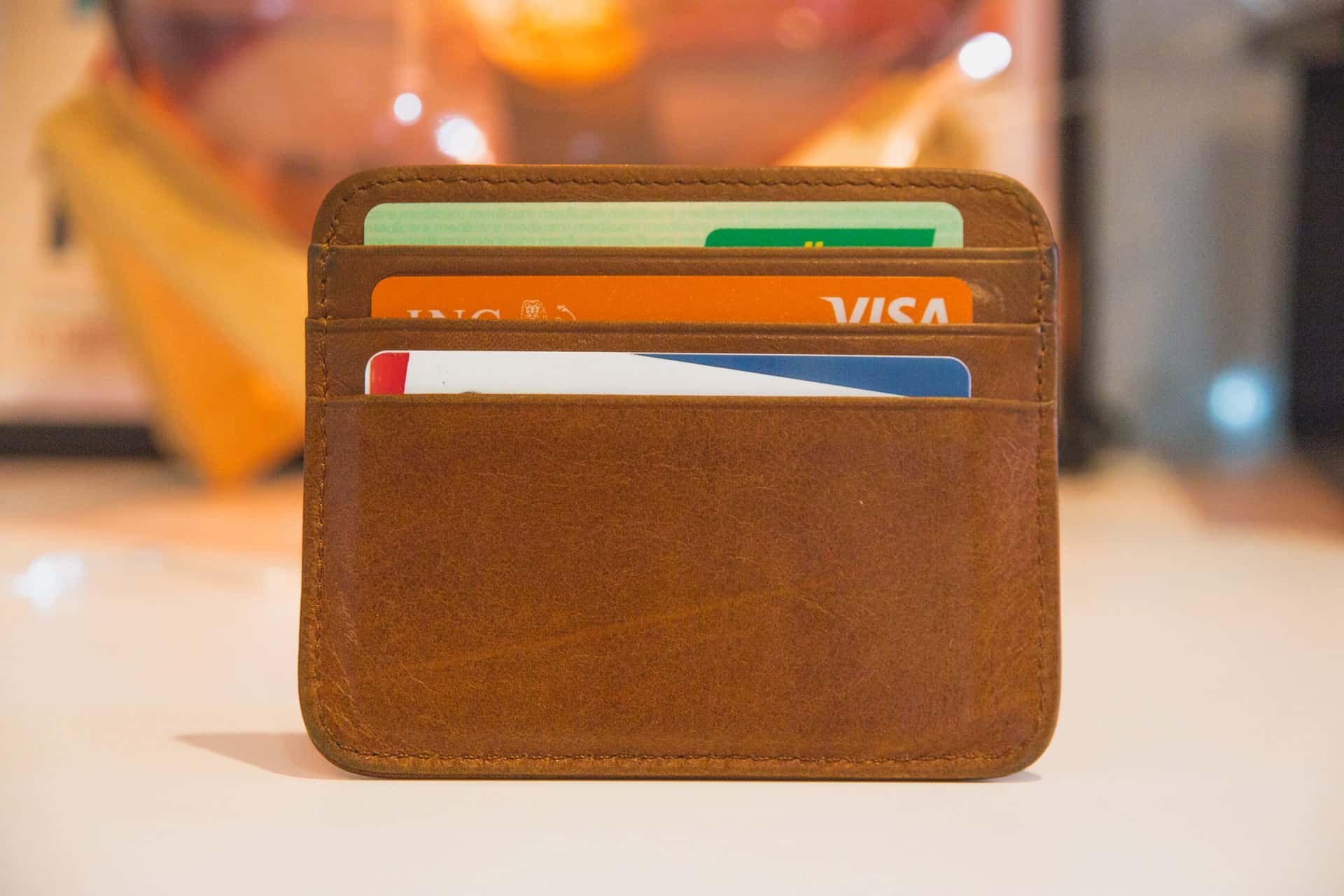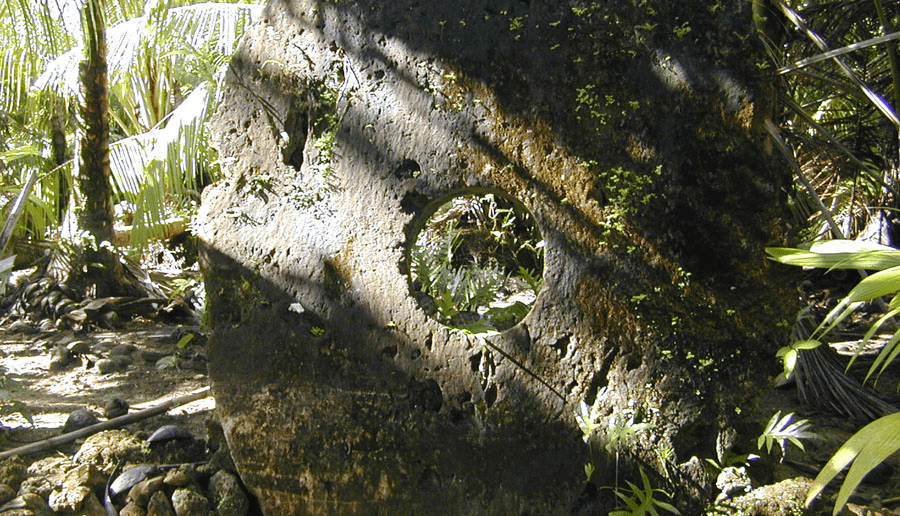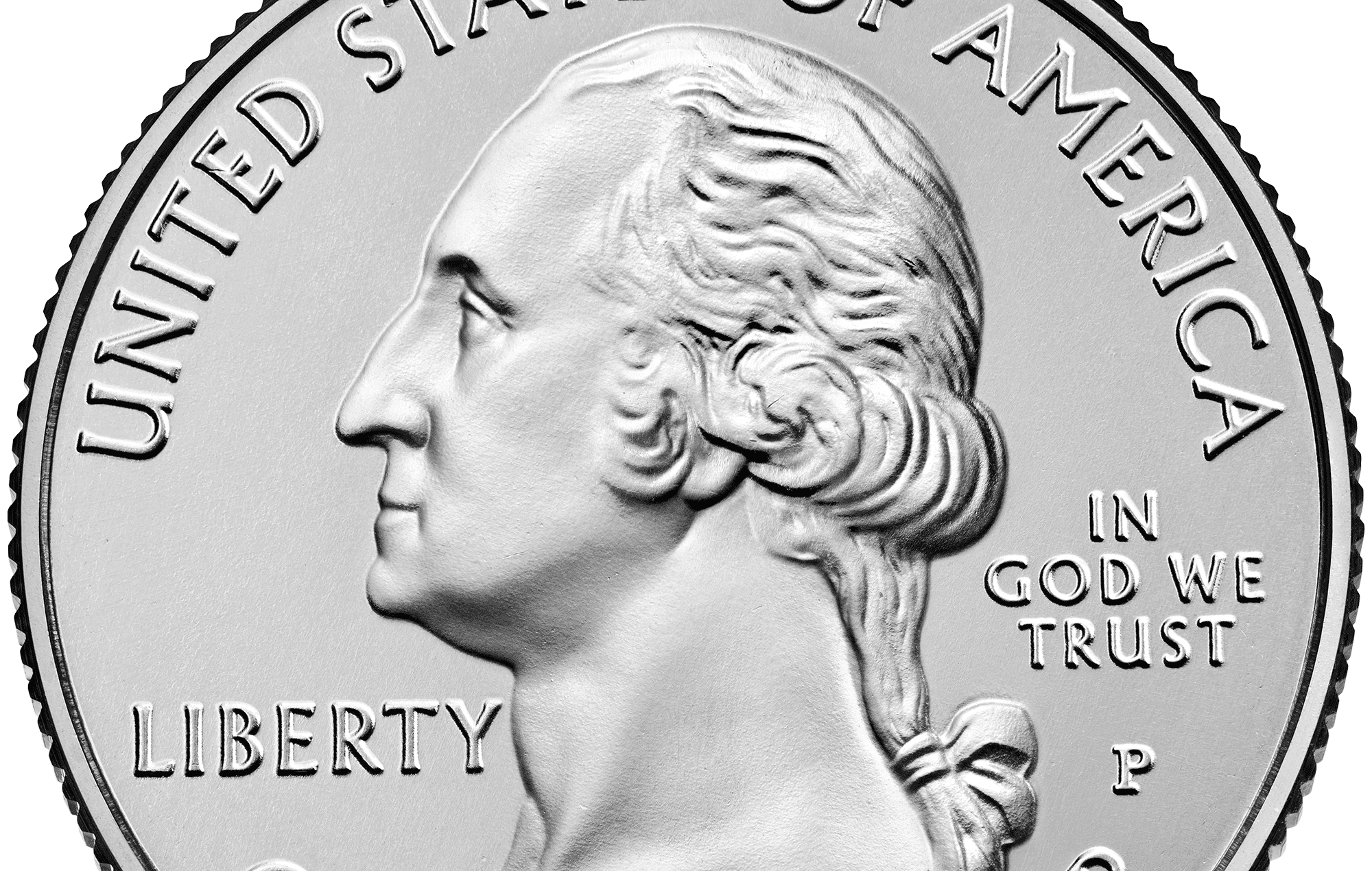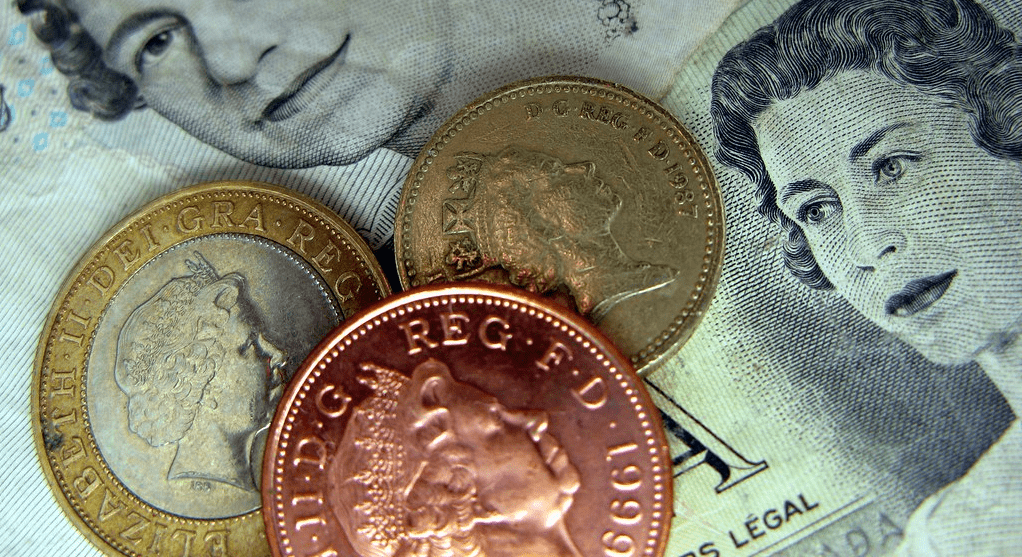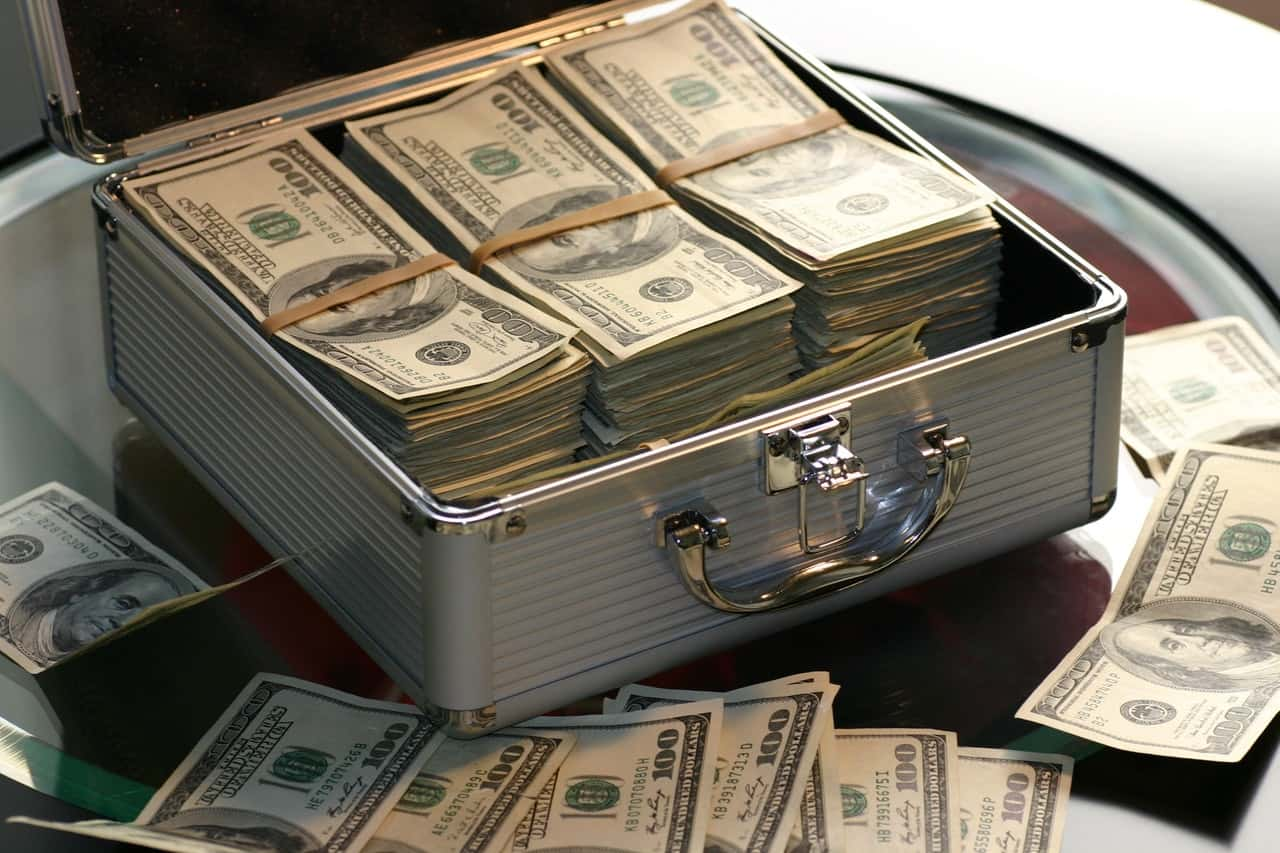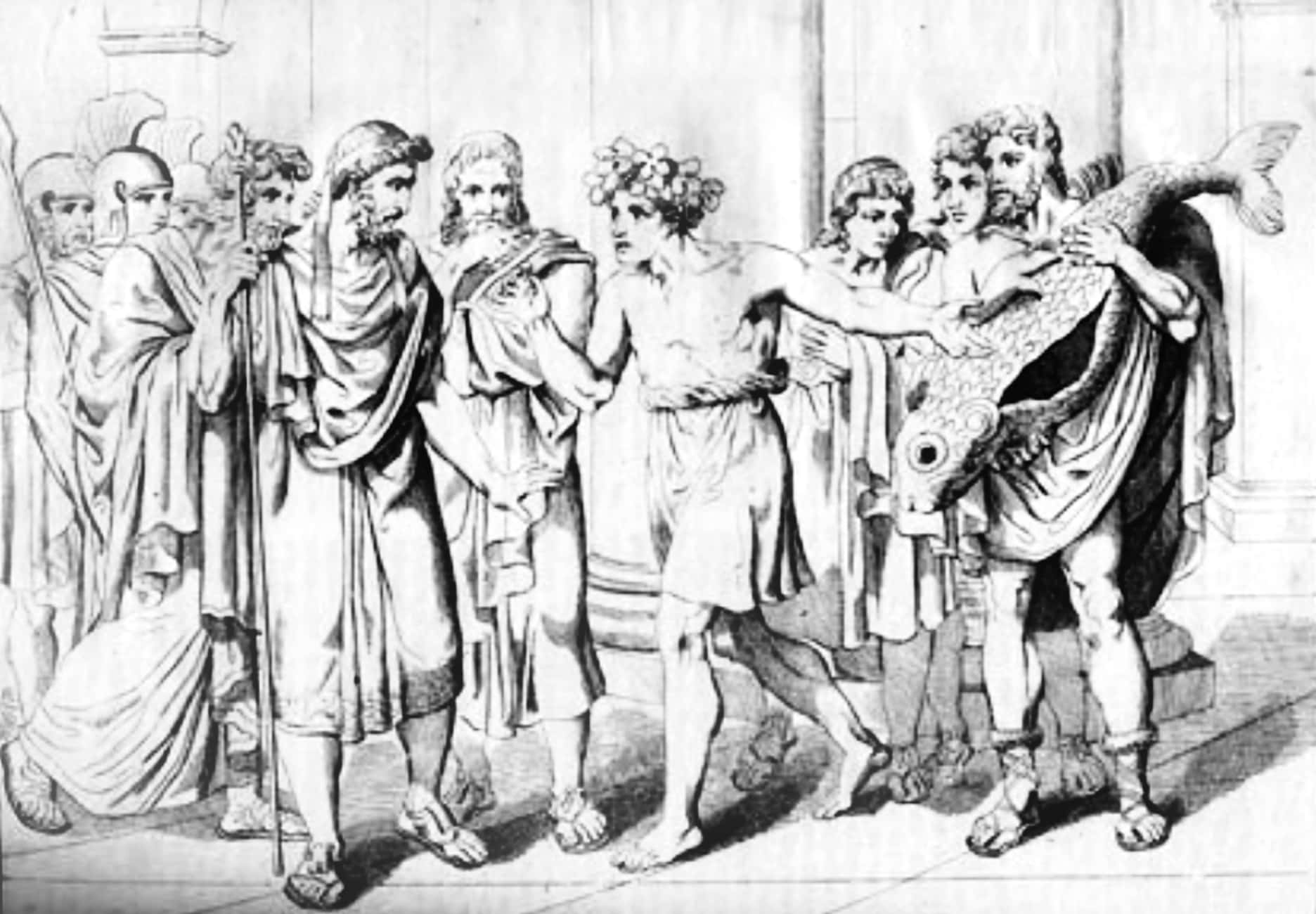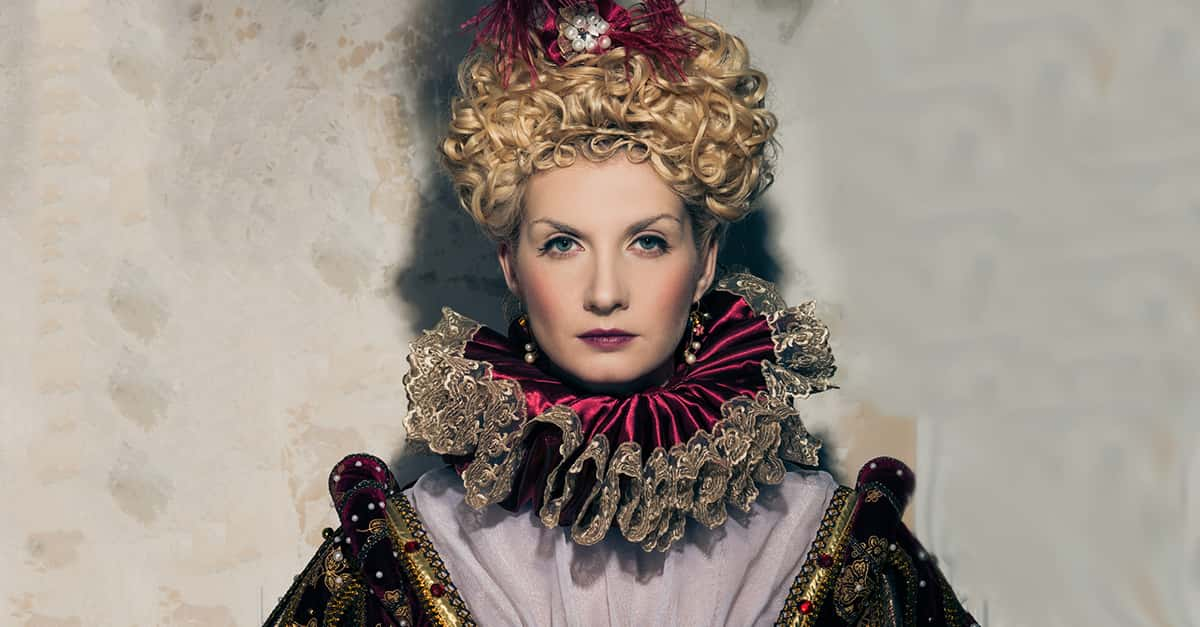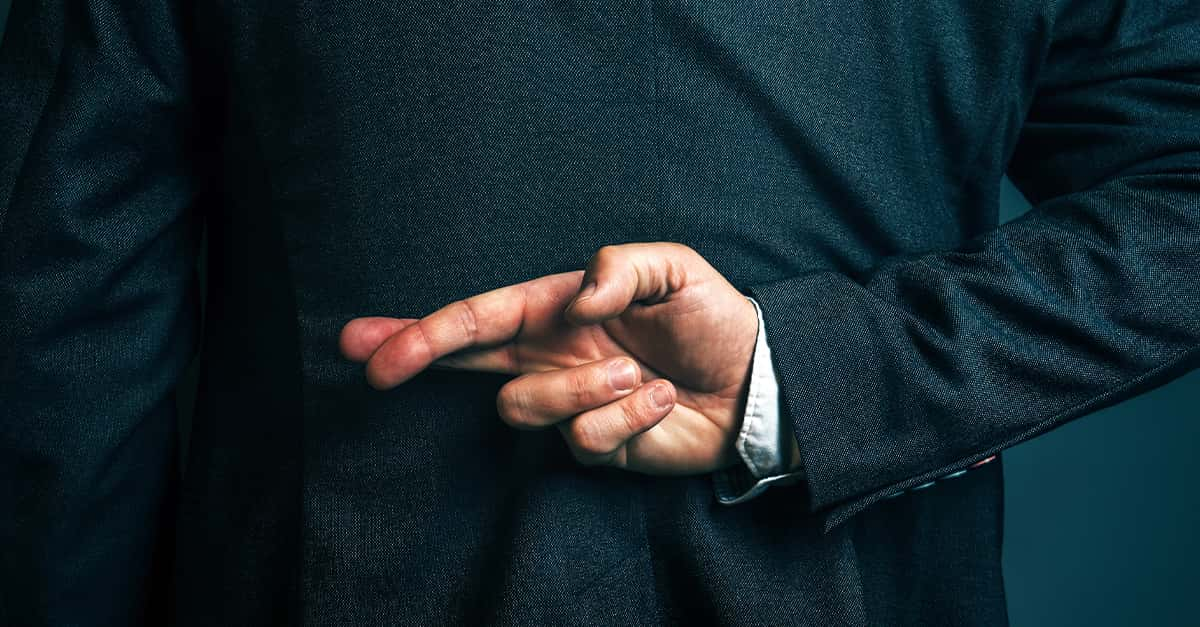“Money often costs too much.”—Ralph Waldo Emerson
Does cash really rule everything around us? Whether a spender or vendor is partial to debit, credit, or the sweet feeling of cold hard cash, the very idea of “money” shapes nearly every social interaction—it can literally even be a matter of life or death. And yet it’s distasteful to admit this truth in public. How much cash does one have? How much cash does one want? How much cash does one need to live right at this moment? The taboo surrounding money-talk speaks to its sacred place in modern society.
Yet what counts as “money” has proven remarkably flexible. Throughout human history, cash has come in all different shapes and sizes (that is, if the society hasn’t done away with cash completely…). From tales of snail shells to telegraphed e-bills, enjoy these 45 cost-free facts about the history of money and finance.
History Of Money Facts
45. Will Work for Everything
The concept of “money” is by no means universal. Take the Inca, a society where men would exchange their labor for government-provided services—but without the intermediary of gold or bills. Public palaces and roads centralized the society together, providing the necessities of food, clothing, and tolls in exchange for service to said institution. It’s not that Inca did not value gold or silvers—it’s just that the “sweat of the sun” (gold) and “tears of the moon” (silver) held more of a religious purpose than an economic one.
44. Dirty Dough
It’s estimated about 90% of American currency contains traces of cocaine. And if that weren’t gross enough, the Southern Medical Journal discovered fecal matter on 94% of tested US bills. In summary, your mom was right about washing your hands before handling cash!
43. Stick It to The Bank
England’s earliest credit cards date back to the Middle Ages, when “credit” was literally a system of broken sticks. If someone incurred a debt with another party, they would place notches in a stick to keep track of the amount owed—and then snap it, debtor and creditor each taking a half. When the debt was settled, they would tie the sticks together and mark the tool as “paid.” This resulted in a tally system that lasted for more than 700 years.
 Wikipedia
Wikipedia
42. Talk About Burning a Hole in Your Pocket…
Eventually, in 1826, the “stick tally credit card” system of debt recording was completely abolished. This seems like a good idea, but not all the results were positive. A few years later, someone had the bright idea to burn the leftover tally sticks all at once inside a furnace beneath the House of Lords. The result was historically explosive, and it caused the worst fire the city had seen since the Great Fire of London in 1666.
41. Cash Cow
Why do we sometimes call money “capital”? Ask the cows. From sheep to camels and all a sorts of livestock creatures, cattle were one of the earliest forms of “money,” in that they were accepted as tenure to be exchanged for other goods. The head of each cattle was called a “caput,” so someone rich in cattle was flush with “capital.” Thanks, agriculture!
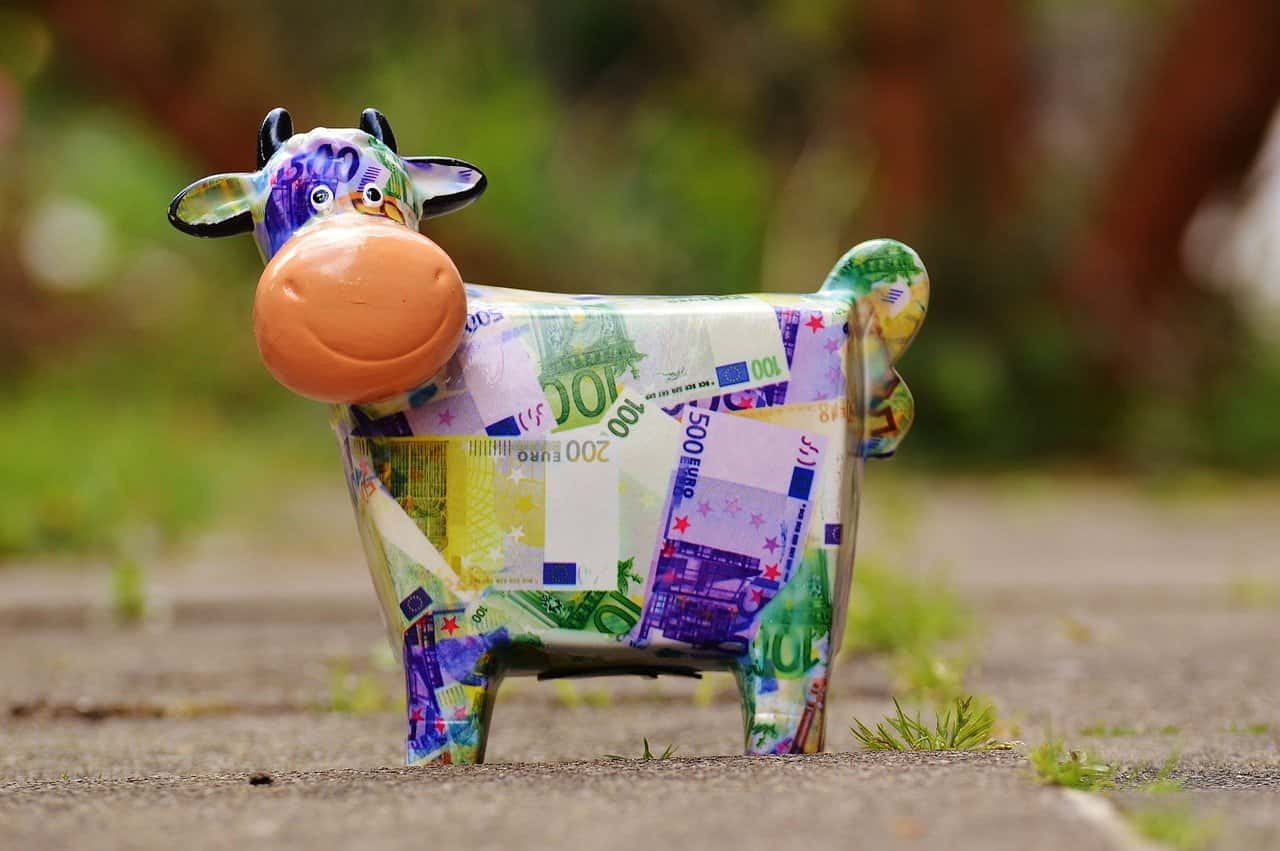 Pixabay
Pixabay
40. A State Affair
Thank King Alyattes of Lydia (present day Turkey) for the first “official” state currency, recorded in 600 BC. As part of the burgeoning Mediterranean trade, the people needed a standardized form of coinage. As Lydia was both the center of a trade-friendly network and a place rich in silver and gold reserves, Alyattes saw opportunity in adopting a standard metric of exchange. Bye-bye barter system, say hello to the state-sanctioned silver and gold coins that offered the way to the first “free” markets.
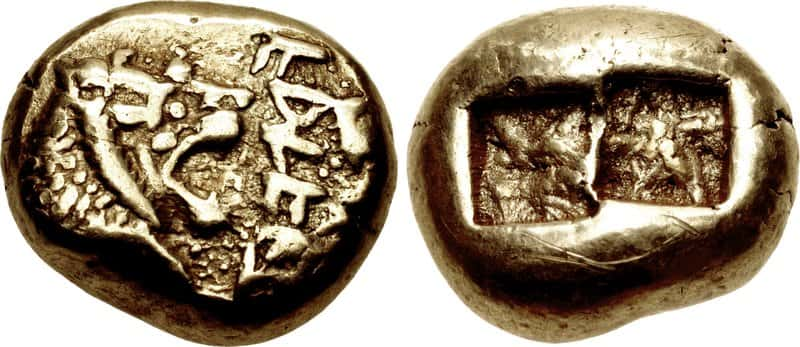 Wikimedia.Commons
Wikimedia.Commons
39. Debt Goes Sci-Fi
Many real-life technological innovations have been predicted in sci-fi literature, and credit cards are no exception. The word “credit card” was first used in a science-fiction novel called Looking Backward, published all the way back in 1888!
38. Head Hunters
Some early Chinese money was printed with the declaration, “All counterfeiters will be beheaded.” Hey, at least they were making themselves clear! Ancient Rome was another on this list of civilizations where counterfeiting was a capital offense (there's that word again, thanks cows!).
37. Fur-Real Cash
In the 1600s, Siberian fur pelts became known as “soft gold,” thanks to the Russian “fur rush” of the period. Demand rose such that these soft goodies became exchanged as if they were as good as cold hard cash. As a result, the Czarist government imposed a “yaska” on every adult male, which meant that each fellow would have to pay a certain tribute tax to their kingdom in the form of fur.

Sign up to our newsletter.
History’s most fascinating stories and darkest secrets, delivered to your inbox daily. Making distraction rewarding since 2017.
36. Great Counterfeiter North
Perhaps not surprisingly, North Korea holds down the fort as the #1 worldwide counterfeiter of American currency.
35. Rush Hour
Years before the great California Gold Rush began, the first Gold Rush in the United States actually happened in North Carolina; in 1799 to be precise, when a 12-year-old farmboy named John Reed discovered a 17-pound golden nugget that his family used as their doorstop.
 Wikipedia
Wikipedia
34. To Serve and Protect Against Copies
The US Secret Service was founded in 1865—but not to lay their lives down for the president’s safety. Instead, this service was founded to fight back against counterfeiting.
33. Who’s to Say What’s Real?
During the American Civil War, it’s estimated that one-third (or even as much as half) of all American money in circulation was counterfeited. Perhaps the real dollar bills were the ones we made along the way (don’t quote me on that as legal advice).
32. Project Runway Meets the Treasury
Since US paper money is made partly from cloth, people in Colonial America would repair torn cash with their handy thread and needle. Let no dollar go to waste.
31. "Cop" a Feel
The copper content of US pennies has been declining since the coin’s birth. The first pennies were pure, 100% copper, while today’s one-cent coins are made from 95% zinc and are only coated in copper.
30. He Didn’t Go to Jared
Understandably, jewellery stores weren’t hospitable for early sailors—both in terms of location and price wage. Thus, a nautical practice emerged where sea-farers would show their love by taking a coin, banging the edge out with a spoon, scooping out the middle, and creating a ring out of the coin's edge to give to their significant other.
29. Living on the Edge
The craggy ridges around American coins were originally made to prevent counterfeiting. In Colonial America, the thrifty scammer would often peel the edges off coins for the extra metal. As a result, the government put fixed ridges onto their coinage, in order to give their money that unparalleled sense of American identity—and to distinguish real coins from fakes.
28. Birthday Face
As per Revolutionary-era American law, no living person may have their face minted on American currency. The only exception to this rule has been President Calvin Coolidge, who got a commemorative coin in his own image celebrate the 150th anniversary of American Independence. Birthdays take precedence before the law, I guess!
27. Ladies First
Queen Isabella of Spain—who was obviously not an American—became the first woman to have her face on American coinage in 1893.
26. Play with This Dough
America prints more Monopoly money per year than it does actual money. For comparison, the popular Hasbro game makes as much as $50 billion of its playful currency every year, while the Bureau for Engraving and Printing printing budget alone was only about $826.7 million in 2014, and they only printed $1.3 billion in “real” currency.
25. Is This a Bank or a Zoo?
When it comes down to it, “money” is simply the medium of exchange in a given context. Thus, soap, beans, elephant tail hairs, the whole elephant itself, and animal by-products (including teeth) have all had their heyday as humanity’s money.
 Unsplash
Unsplash
24. 100,000 Reasons Why
Between 1934 and 1935, the largest bill ever printed in American history was made and exchanged. At $100,000 per note, it was primarily exchanged from bank to bank, rather than bro to bro. Sorry, that trillion dollar bill that Mr. Burns had was entirely fictional.
23. Worth the Weight
The first metallic forms of money hail from the Sumerians of Ancient Mesopotamia (modern Iraq). These bits were known as “ingots,” and their value was tied to their weight, not their signage.
22. Economic & Eco-Friendly
How much money is inside your roof? Or your fireplace? Shredded paper bills are sometimes recycled into shingles or heating logs.
21. Stamp of Approval
Knights of the European Middle Ages traveled surprisingly light on cash. Instead, a knight sported a special ring, which he would then use to stamp any bills he incurred on his adventures. Afterwards, an innkeeper or other vendor would simply forward the stamped IOU to the knight's castle.
20. In Peter We Trust
The bald eagle on your US silver dollar lived a hard-pressed life. Or rather, it ended that way: Peter, as the bird was called, would frequently hang around the US Mint in Pennsylvania, back when bald eagles still lived in the state. Peter eventually served as the model in 1836 for US Mint sketches. Ironically, one day he got his wing caught in a coining press and died soon after. The Mint honored their buddy by stuffing him and displaying him in their lobby, where he remains to this day.
19. Ye Olde Piggy Bank
The “piggy bank” is not actually named because it's always in the shape of a pig—that was a later feature. Instead, it was named after the orange-pink “pygg” clay from which it was made in the Middle Ages. The porcine-sounding name was simply a coincidence. However, some pig-shaped piggy banks, in all their hog glory, have been discovered from as far back as the 14th and 15th centuries.
18. My Little Economic Crisis Play Set
In 1923, the hyperinflation crisis of Germany made their national currency so worthless that cash was frequently tossed to children to play with as toys. It was also used for wallpaper, so your living room could be an aesthetic testament to your debt.
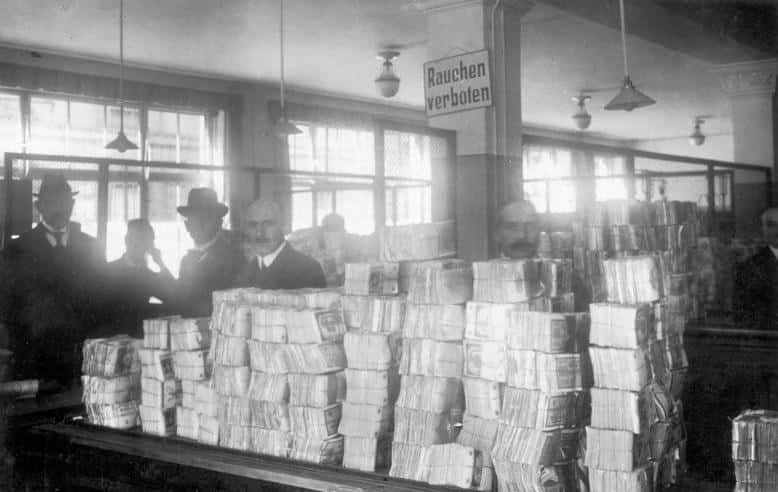 Wikipedia
Wikipedia
17. Bench Warmers
The English word “bankruptcy” derives its meaning from the Italian phrase “banca rotta” for “broken bench.” If an Italian money lender fell to ruin, his table was considered “broken,” giving birth to a useful idiom and a depressing legal-economic reality.
16. Make It Plastic
Iceland is the number one country for credit and debit card use. A whopping 70% of all Icelandic consumer business is conducted via card, compared to only 30% in all North America. Perhaps it’s time to ditch the stereotypes of about fast-spending Americans?
15. Let Me Literally Wire You
The first “e-money” (electronic money) transfer wasn’t in the 21st century, but rather in the mid-1900s! Western Union made the first electronic fund transfer ever via the telegram in 1860. There Dad, I told you this wasn't newfangled technology!
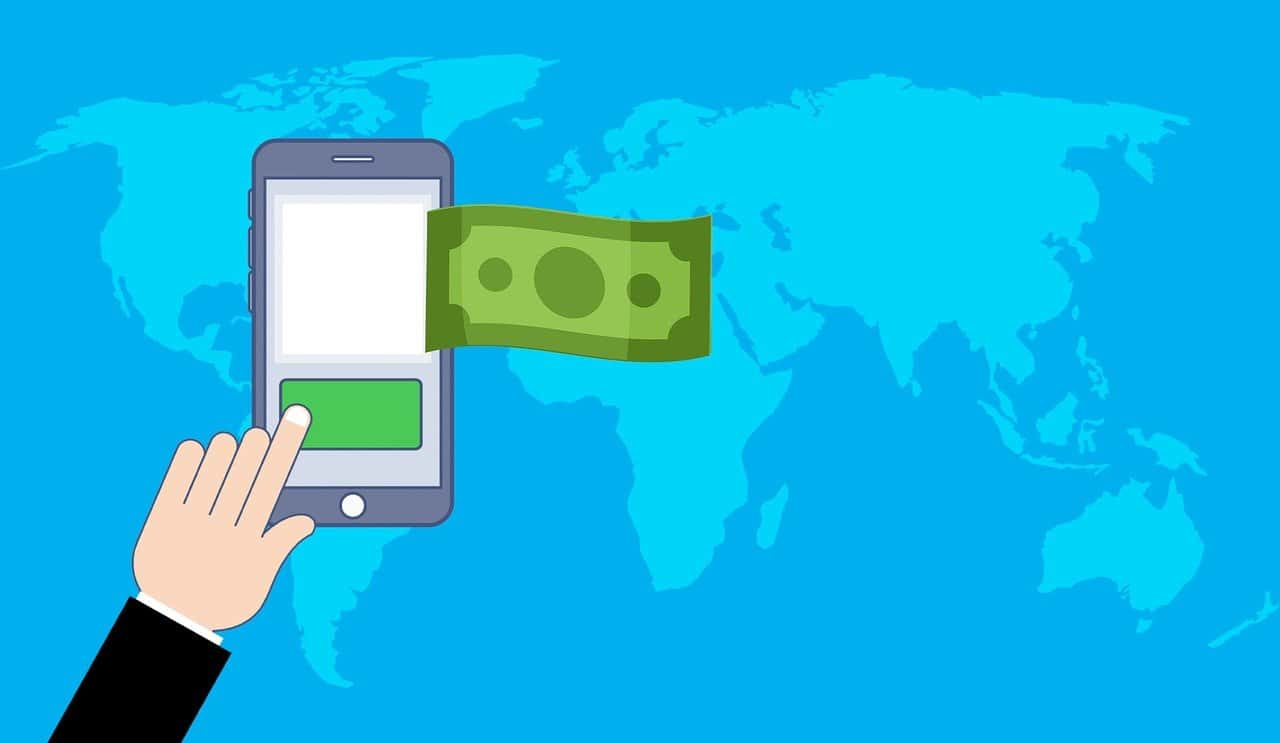 Pixabay
Pixabay
14. Think Ink
The US Bureau of Engraving and Printing uses approximately 9.7 tons of ink per day to pen and press your money.
13. $hell $hocked
The word “cowry” refers to the shell of a snail. These natural casings are also among the longest-used forms of currency in human history. Several African countries, China, India, and even the Ojibway people of North America were all known to use cowry shells as a medium of exchange at some point in their respective histories.
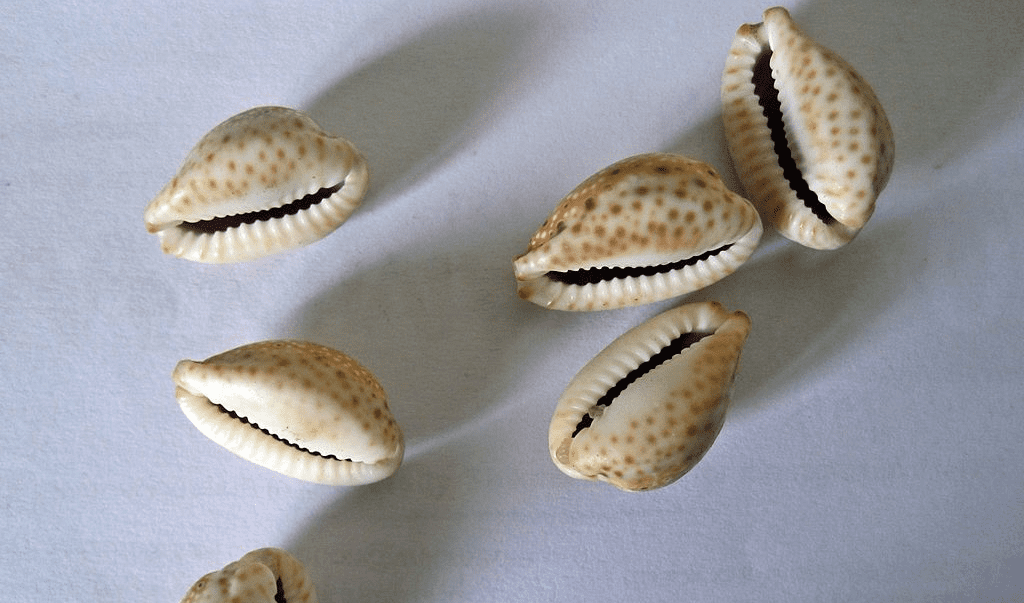
12. Low on Cash, High in Sodium
Ancient Roman soldiers were often paid in salt. Hence, the word “salary” derives from the Latin word for salt, “sal.”
11. Paper, Plastic, or Jelly-Filled?
Yap islanders knew a thing about “big finance”—they often used large, donut-shaped rocks called “rai stones” to conduect their more important transactions (marriages, political deals, inheritance, kidnapping ransom, all the boring legal stuff). Although these coins varied in size, they could get as huge as 12-feet long in diameter.
10. Smells Expensive
We can (maybe) thank the Danes for the phrase “to pay through the nose.” It’s said that the Danish would split open the nose of any Irish person who refused to pay their poll tax. However, other authors say there's little evidence that this is the case. Their most common explanations tend to loop back to tall tax tales, which are generally less interesting than the ol' nose split.
9. My Five Cents
Because money is illogical, the 1919 Liberty Head nickel is a five-cent coin that isn't worth five cents, but rather a fortune. In 1972, the piece became the first US coin to break the $100,000 price ceiling; it broke the $1 million barrier in 1996 and sold for $3.7 million USD at a 2010 auction. These pieces are so expensive because only five were ever minted.
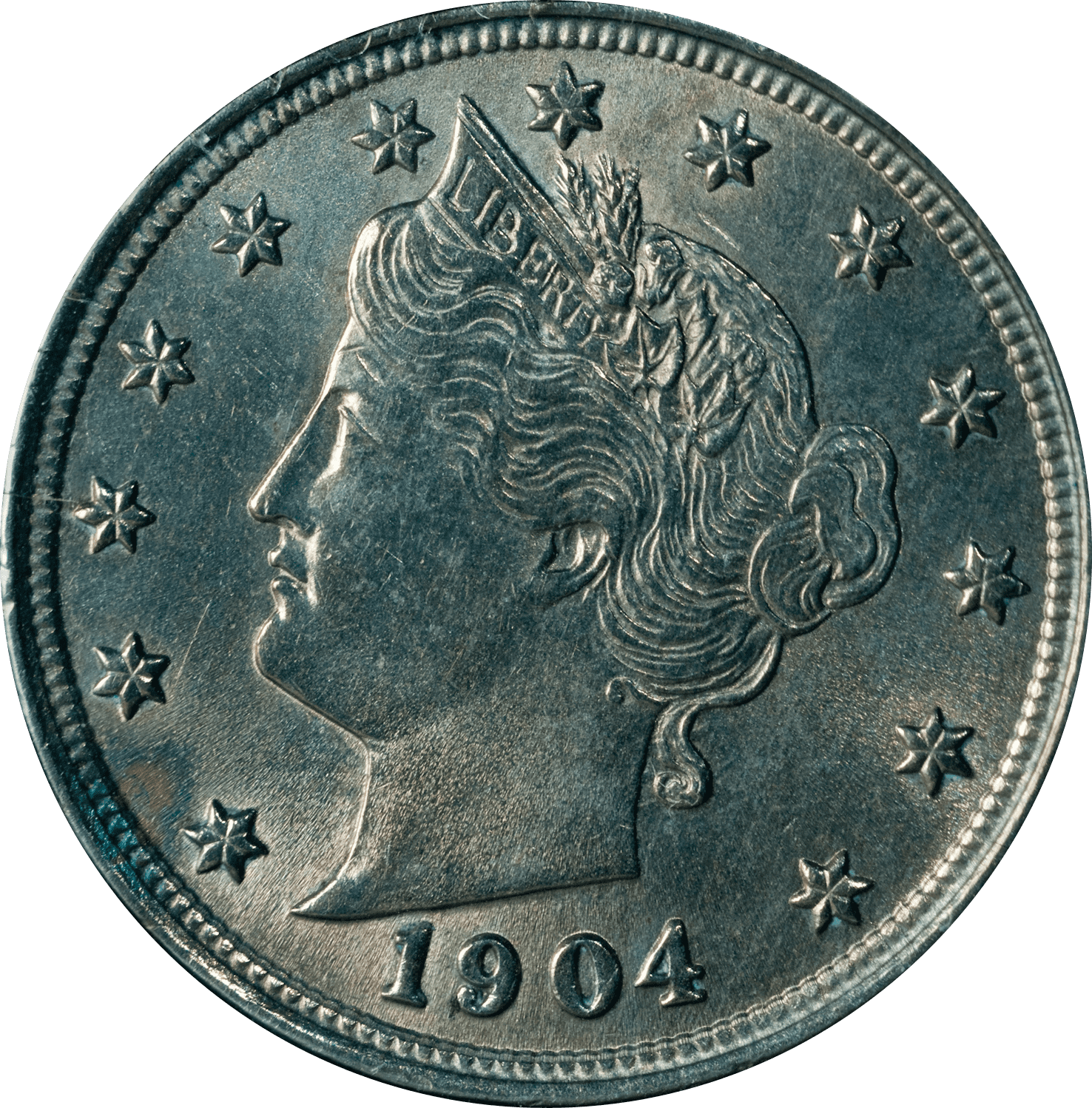 Wikimedia.Commons
Wikimedia.Commons
8. Little Pieces, Big Cash
Turkey is home to the oldest pieces of money ever found. Researchers uncovered obsidian pieces that were used for trade as early as 12,000 BC.
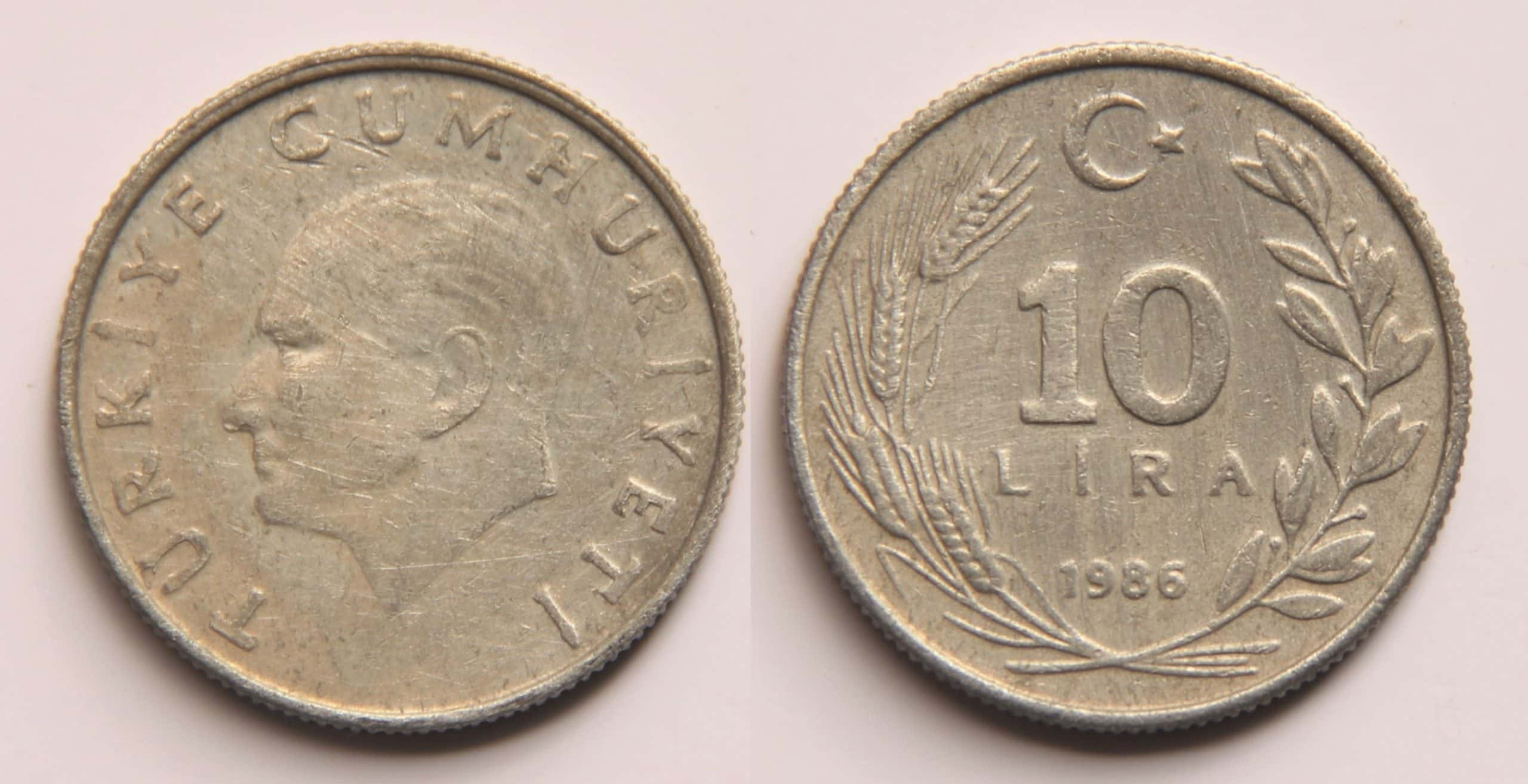 Wikimedia.Commons
Wikimedia.Commons
7. One Groove Makes 15 Cents of Difference
A legitimate US quarter can be identified by the 119 grooves on its rim. Although a dime is much smaller—in value and size, obviously—it has just one less groove at 118. Know the difference!
6. Forgotten First
Don’t let George Washington hog all the glory—it was Samuel, P. Chase, US Secretary of the 1862 Treasury, whose mug adorned America’s first dollar bill.
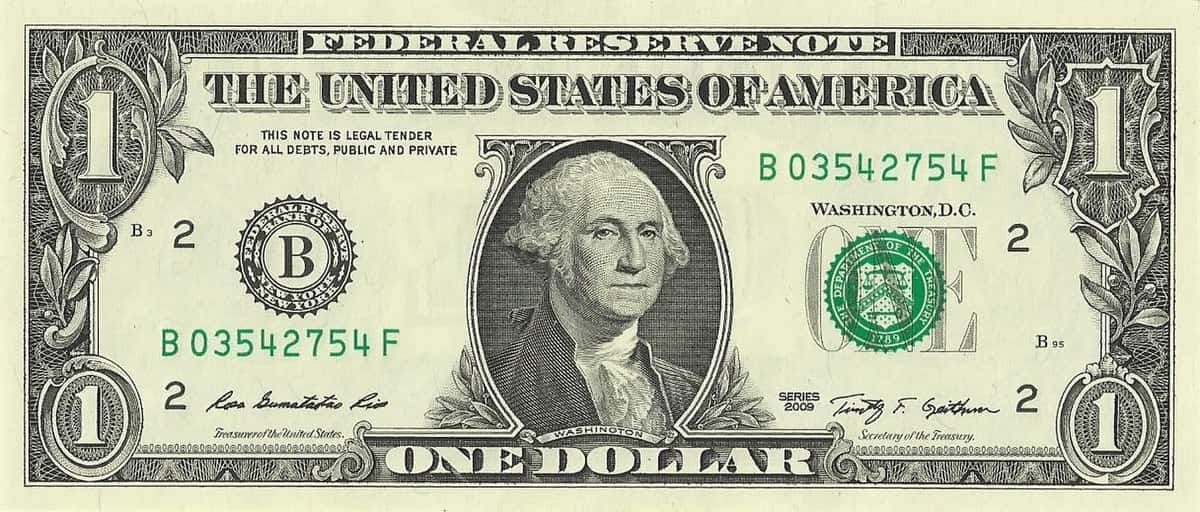 Wikipedia
Wikipedia
5. The Face to Beat
Who holds the world record for appearing on the most currency? None other than Queen Elizabeth II of England. Not only does her royal visage grace currency in England, the Queen’s face appears on the money for a total of 30 different nations. Ahh yes, Empire and all that, pip pip cheerio!
4. Uncle Sam’s Secret Sauce
The secret ingredient to American money remains a secret. The US government keeps a lid on the formula used to ink bills to combat counterfeiters. As a result, there’s no definite story on why the bills are green.
3. Catch-22: Rome Edition
Emperor Diocletian of third century Rome ran his economy on death threats. To fight inflation, he passed a law that forbade people from selling goods beyond a fixed price ceiling. Under penalty of death. When people hoarded goods in response, he then passed a law that forbade goods-hoarding. Under penalty of death. Finally, when people just threw their hands up and just gave up on trade, the Emperor made it illegal to close your business or not take up your father’s vocation. Under, you guessed it, penalty of death. You just couldn’t win with this guy.
2. Use Your Imagination
Polycrates of Samos holds the dubious honor of being one of history’s earliest recorded forgers. In 540 BC, the sometimes “enlightened tyrant” of Samos paid a debt to Sparta entirely with fake gold coins. Based on what I know about the Spartans, maybe that wasn't the best idea.
1. Can’t Touch This
The poet Filelfo—a family rival—once spread rumors about the Medici patriarch being a traitor and a liar. When the family regained power after exile and began exacting revenge on their enemies, Filelfo’s words caught up with him: a gang of men attacked him with a blade, slicing his face from ear to ear. The message was clear: he had literally “lost face” with the family.
Sources: 1, 2, 3, 4, 5, 6, 7, 8, 9, 10, 11, 12, 13, 14, 15, 16, 17, 18, 19, 20, 21, 22


